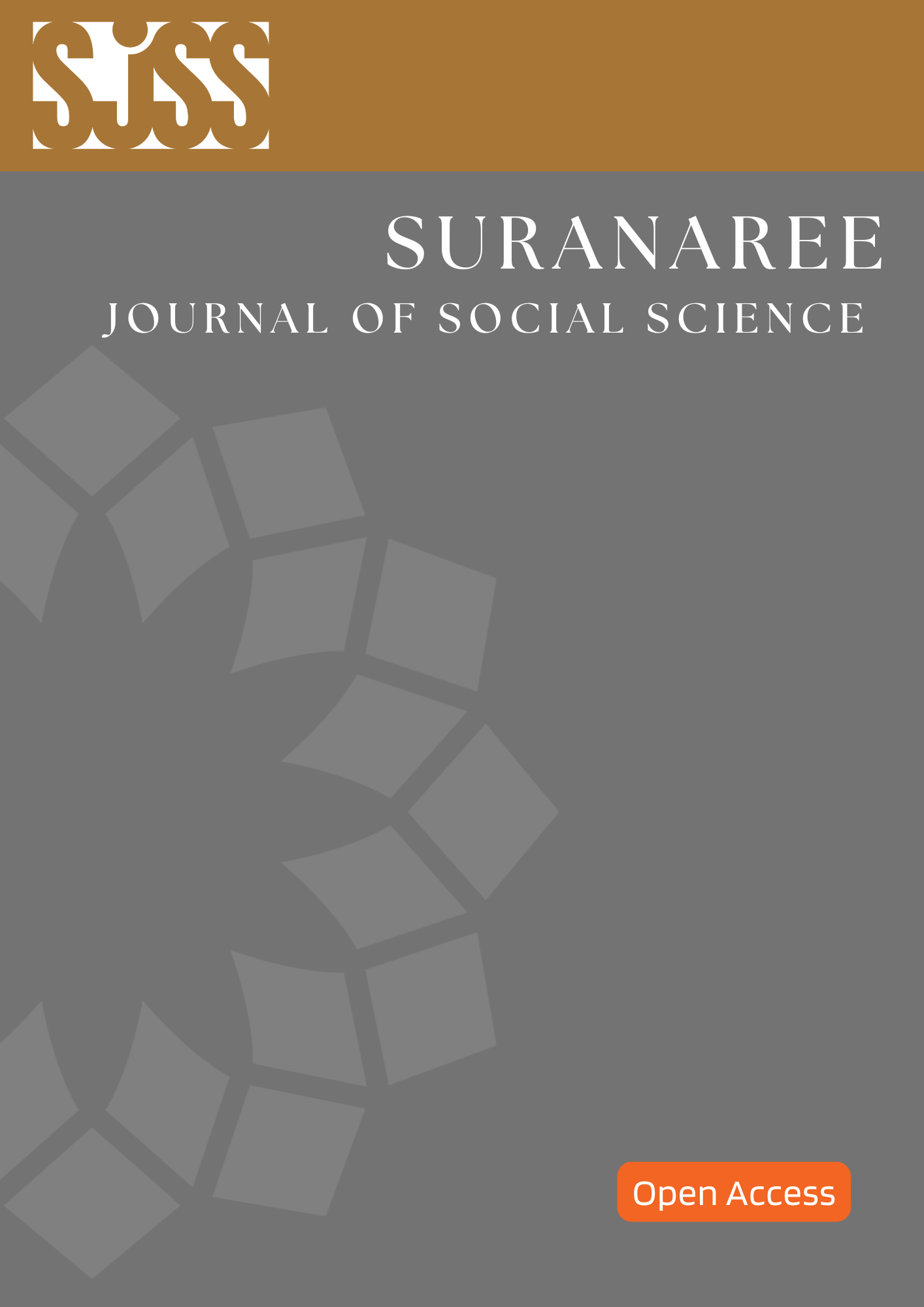Farmers’ Profitability based onThai Silk Value Chain for Development of Community Sericulture Enterprises in Nakhon Ratchasima Province
Main Article Content
Abstract
This paper aims to evaluate a sericulture value chain model and the determinants influencing profitability for sericulture farmers. Three community enterprises in Nakhon Ratchasima province were selected for this study. Findings from an activity-based costing analysis indicate that labor costs are about 80 percent of the total cost with Thai silk fabric costing an average of 767.8 baht per meter and with a profit of 398.8 baht per meter. Estimates were calculated using the backward method of a multiple regression model. The estimates revealed that factors influencing profitability for sericulture farmers differs for each community enterprise. Demographic variables and natural dying, the method used for product development, positively affected profitability for sericulture farmers. The value added factors preferred by the farmers included uniqueness, quality, and the collective group, all of which were significantly influential factors in profitability for the sericulture farmers. Thus, community enterprises should develop production processes based on activity costs, establishing community uniqueness, and through the selection of sericulture products with high added value and which are suitable for the group. The government sector should invest in new sericulture business models as well as encourage new generations to use Thai silk products in everyday life. In addition, strengthening of community networks and competency must be encouraged to build competitiveness.
Article Details

This work is licensed under a Creative Commons Attribution-NonCommercial-NoDerivatives 4.0 International License.
References
Department of Agriculture Extension. (2019). Community Enterprise Information System. (In Thai). [On-line]. Available: https://smce.doae.go.th/index.php
Gulid, N., Serirat, S., Sirikudta, S., Sayapan, U., & Popaijit, N. (2015). Thai Silk Production Industry Development in Northeastern Region. (In Thai). Srinakharinwirot Business Journal. 6(1): 26-38.
Hotz-Hart, B. (2000). Innovation Networks, Regions and Globalization. The Oxford Book of Economic Geography, Oxford: Oxford University Press.
Janpitak, S. (2013). Promoting and Developing Career to Grow Mulbery Silk Plants. (In Thai). [Online]. Available: http://www.khorat.doae.go.th/WEB2012/report/kaset01/k001.pdf
Janple, J., Songsuwong, W., Kijkar, P., & Wongsamin, S. (2016). Development of Thai Song Dam Woven Fabric Products to Add Value Following the Creative Economy Concept. (In Thai). Veridian E-Journal Silpakorn University. 9(2): 82-89.
Joreskog, K. G., & Sorbom, D. (1989). LISREL 8: A Guide to the Program SPSS. Chicago: SPSS.
Kaewmongkol, C., & Kittipalap, R. (2016). Guidelines for Developement of Silk Weaving of the Silk Weavers Group in Khon Kaen. (In Thai). Dhammathas Journal. 16(2): 67-74.
Kerlinger, F. N. (1986). Foundations of Behavioral Research (3rd ed.). USA: Hort, Rinehart and Winson.
Kitson, M., Martin, R., & Tyler, P. (2004). Regional Competitiveness: An Elusive Yet Key Concept?. Regional Studie. 38(9): 991–999.
Kotler, P., & Keller, K. (2009). Marketing Management (13th ed.). Pearson Prentice Hall. Martin, D., &
Krishnaphuti, W. (2013). Management Community Enterprise: Learning from a Professional Silk and Cotton Weaving in Khon Kean Province. Humanities Social Sciences Journal. 30(1): 165-188.
Maneerattanarungrot, C., & Donkwa, K. (2018). Supply Chain Management of Silk Cloth in Nakhon Ratchasima Province. (In Thai). Suranaree Journal Social Science. 12(2): 85-107.
Porter, M. E. (1985). Competitive Advantage Creating and Sustaining Superior Performance. New York: The Free Press.
Schouten, J. (2012). Sustainable Marketing. Upper Saddle River, NJ: Pearson Prentice Hall.
Thatsta, A., Jaioodtong, S., & Jaioodtong, J. (2017). The Transfer of Local Wisdom on Silk Weaving: Ban Khwao Distinct, Chaiyaphum Province. (In Thai). Journal of Nakhonratchasima College. 11(1): 117-128.
The Queen Sirikit Department of Sericulture. (2017a). Strategy of the Department of Sericulture, 20 Years. (In Thai). [On-line]. Available: http://122.154.22.188/newqsds/file_upload/2017-10-31-20yearsTs.pdf
The Queen Sirikit Department of Sericulture. (2017b). Type of Silk Varieties. (In Thai). [On-line]. Available: https://qsds.go.th/2017/12/09/รูปแบบการเลี้ยงไหม/
The Queen Sirikit Department of Sericulture. (2018). The Success of Collaborative Farming in Khumma U Village. (In Thai). [On-line]. Available: http://122.154.22.188/newqsds/file_upload/2018-10-17-5-2561_optimize.pdf
The Queen Sirikit Department of Sericulture. (2019). Hang Khra Rok Silk. (In Thai). [On-line]. Available: https://qsds.go.th/silkcotton/k_2.php
Toommanon, V. (2001). Activity Based Costing: ABC. (In Thai). Bangkok: Ionic.
Wirakul, W., Watakit, U., & Khemkhan, J. (2018) Effective Increase Value Added Creation of Mudmee Silk for Improve Brand Value of Community Enterprise in Chonnabot District, Khon Kaen. Dusit Thani College Journal. 12(3): 532-547.
Yamane, T. (1973). Statistics: An Introduction Analysis (3rd ed.). Harper & Row.


